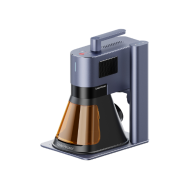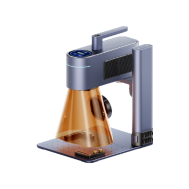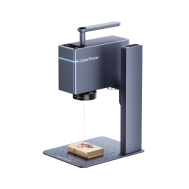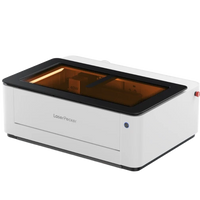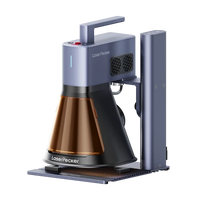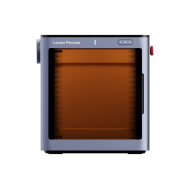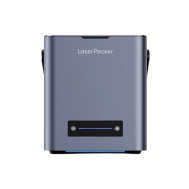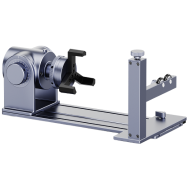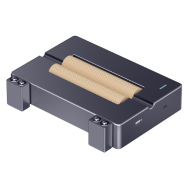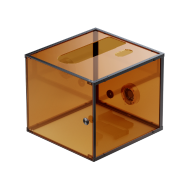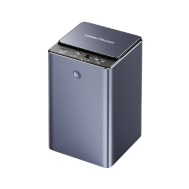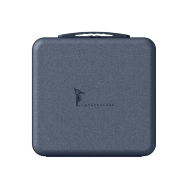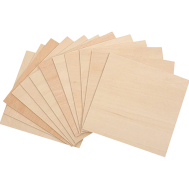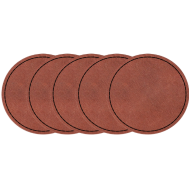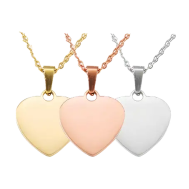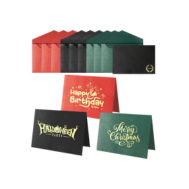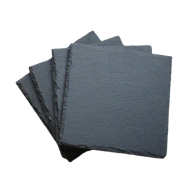CNC cutters and laser cutters are two common choices in today's cutting and engraving world. You'll find them used in woodworking, metalworking, sign-making, crafts, and even prototype creation. Both are powerful tools that have become essential across many industries.
Still, they work in very different ways — each with its own strengths, weaknesses, and ideal applications. In this guide, we'll give you a detailed comparison of CNC machines and laser cutters to help you choose the one that best fits your needs.

In this article:
- Part 1: What is a CNC Cutter
- Part 2: What is a Laser Cutter
- Part 3: CNC Cutter vs Laser Cutter: 8 Key Differences
- Part 4: CNC Cutter vs Laser Cutter: How to Choose
- Part 5: FAQ for CNC vs Laser Cutter
Part 1: What is a CNC Cutter?
A CNC cutter or router is essentially a computer-controlled machine that cuts and shapes materials with high precision. It takes designs created in CAD/CAM software and converts them into motion commands for the cutting tool.
Unlike laser cutters, CNC machines use rotating cutting bits or blades to remove material, making them ideal for 3D shaping and deeper cuts. They work well with wood, metals, plastics, foams, and composite materials. You'll find them widely used in manufacturing, woodworking, and engineering workshops for producing strong, detailed parts.

Pros and Cons of CNC Cutting Machines
Pros:
- Great for tough stuff like hardwood, plastic, and metal.
- Can cut and shape in 3D.
- Super tough and reliable for factories.
- Perfect for big manufacturing jobs.
Cons:
- Not as fast as lasers for detailed work
- Needs to touch the material, so the tool wears out and needs upkeep.
- Makes noise and dust when running.
- akes more time to learn and set up.
Part 2: What is a Laser Cutter?
Laser cutters use a super-strong light to cut, etch, or mark stuff. The laser melts or burns away the material, following a path to make clean cuts.
Since the laser doesn't make contact, the machine parts don't wear down, which makes laser cutting great for detailed work. You can find these cutters at sign shops, design studios, and even in the hands of hobbyists. They can cut wood, plastic, fabric, and even thin metal.
Pros and Cons of the Laser Cutter
Pros:
- Lasers cut with amazing accuracy, making even tricky designs easy
- Because they use light, there are no bits to replace.
- They work on many things, like wood, plastic, leather, and some metals.
- Lasers can both cut and mark designs all in one go.
- You get smooth, neat edges without needing to do any extra work.
Cons:
- They can't cut as deeply into some materials as CNC machines.
- You need to be careful about safety because of the fumes and strong light.
- They might not be the best for really deep carving.
Part 3: CNC Cutter vs Laser Cutter: 8 Key Differences
CNC machines and laser cutters do similar things, but they work differently. Knowing how they differ can guide you to pick the right one for your projects.
1. Cutting Method
CNC cutters carve materials using rotating bits or blades, which makes them great for shaping wood, metal, or plastic.
Laser cutters, on the other hand, use a concentrated beam of light to cut or engrave without physical contact, offering extremely fine precision.
2. Precision and Accuracy
Laser cutters are usually better for detailed designs, text, and fine engraving.
CNC cutters excel at larger, deeper cuts and 3D shaping, though tool marks may remain and sometimes require sanding or finishing afterward.
3. Applicable Materials
CNC Cutters: Ideal for hardwood, MDF, plywood, soft metals (like aluminum or brass), foam, plastics, and composites.
Laser Cutters: Excellent for wood, acrylic, leather, paper, fabrics, plastics, coated metals, and thin sheets of steel, aluminum, or titanium (when using a fiber or IR laser).
4. Cutting and Engraving Speed
Laser cutters are faster for engraving and cutting thin materials.
CNC cutters move more slowly since they physically remove material, but they're excellent for carving 3D shapes and thick materials.

5. Cost and Maintenance
CNC machines often have a lower upfront cost, especially for small setups, but require more maintenance because cutting tools wear out over time.
Laser cutters cost more initially but need less maintenance since the laser beam doesn't physically touch the material or wear out like drill bits.
6. Size/Footprint
CNC machines tend to be large and heavy, often requiring a dedicated workshop space.
Laser cutters are generally more compact, especially desktop or mid-size models, making them suitable for classrooms, studios, or even home use.

7. Noise Level
CNC machines are quite loud due to their motors and cutting tools.
Laser cutters are much quieter—you'll mainly hear the ventilation or exhaust fans, which makes them better for shared or office environments.
8. Residue & Cleanliness
CNC machines produce chips, sawdust, or shavings that need regular cleanup.
Laser cutters generate little debris—mostly smoke or light residue—which can be easily managed with an air purifier or exhaust system.

Comparison Table - CNC Cutter VS Laser Cutter
| Feature | CNC Cutter | Laser Cutter |
|---|---|---|
| Cutting Method | Mechanical (rotating bits) | Non-contact (laser beam) |
| Precision | High for carving, lower for very fine detail | Extremely high, excellent for engraving |
| Materials | Thick wood, metals, composites | Wood, acrylic, leather, coated metals |
| Speed | Slower, better for 3D/contour cutting | Faster, best for engraving and thin cuts |
| Maintenance | Frequent tool changes; bit wear | Lower mechanical maintenance; lens/nozzle care |
| Ease of Use | Steeper learning curve (fixturing, CAM) | Easier with software integration and presets |
| Size / Footprint | Larger; typically needs workshop space | Compact options available; suitable for desktop |
| Noise Level | Loud (mechanical) | Quiet to moderate (fan/air assist noise) |
| Residue / Cleanliness | Produces dust, chips, and shavings | Minimal debris; clean edges (smoke/residue possible) |
Part 4: CNC vs Laser Cutter: How to Choose?
The best option depends on your project goals, materials, and budget. Here's a simple guide to help you decide between using a CNC machine or a laser cutter.
When to Choose a CNC Cutter
- Choose this if you often work with strong stuff like thick wood, hard plastics, or metals.
- Go with this type if you need to carve, mill, or shape things in 3D.
- Good for tough manufacturing jobs where lasting power is more important than small details.
- Pick this when you have a tight budget and don't need crazy fast engraving.
When to Choose a Laser Cutter
- Best for fine, detailed work like engraving logos, text, or intricate patterns.
- Excellent for small or delicate materials such as wood, acrylic, leather, or paper, offering clean edges with no sanding needed.
- Low-maintenance and compact, making it perfect for studios, classrooms, or home creators.
- Ideal for fast production, since laser engraving and cutting are quicker and require minimal post-processing.
If you need a machine for precise cuts and detailed engravings, think about getting a laser cutter. They're also great for small, clean cuts. Because they are compact and easy to keep up, they fit well in home studios or creative spaces. For pros and serious hobbyists, the LX2 Laser Cutter is a really flexible tool.

It can cut up to 20mm dark acrylic and 22mm wood with its powerful diode laser. Even more impressive, it engraves at speeds of up to 1,000mm/s, allowing you to create detailed designs, process batches efficiently, and finish projects in no time.
Part 5: FAQ for CNC vs Laser Cutter
1. CNC vs Laser Cutter for Metal: Which Is Better?
Okay, so CNC cutters? Total rockstars when you're dealing with thick metal – like in factories and stuff. Just remember, you gotta have tough drill bits and keep them tuned up. Now, lasers? Especially those fiber lasers? They're awesome for engraving metal. And if you need to slice through thin sheets of brass, aluminum, or stainless steel super precisely, lasers are your best bet. Basically, CNC is king if you're grinding away a lot of metal. But for tiny details and engraving, go with a laser cutter.
2. CNC vs Laser Cutter for Wood: Which Is Better?
Both CNC machines and laser cutters can cut wood, but they're good for different things. CNC machines? Perfect if you're working with chunky wood for big, complex 3D stuff. Laser cutters are all about speed and shine when you need to engrave or slice through thin stuff like plywood. Think CNC for making tables and laser cutters for cool art projects.
3. What Cannot Be Cut with a Laser Cutter?
Laser cutters can't handle everything. Stuff like PVC, vinyl, Teflon, and polycarbonate will give off nasty, toxic fumes if you try to burn them. Also, super thick metals or really hard stone? Forget about it with most regular laser cutters. Just double-check that your material is okay to cut before you start zapping away.
4. How Thick Can a Laser Cutter Cut?
How thick the stuff you can cut depends on the laser machine. Basic diode lasers? They'll slice through a few millimeters of wood or acrylic. But if you've got a stronger setup, like the LP5, you can cut up to 20mm of basswood, 15mm of acrylic, or even thin metal sheets like brass or aluminum (around 1mm thick). Now, those big, tough industrial laser cutters? They can get through some serious metal, but they need a ton of power to do it.
5. Is CNC Cutting Cheaper Than a Laser Cutter?
CNC machines can seem cheaper at first, especially if you're just getting started. But heads up, stuff like replacing tools, keeping them running, and the fact that they're not super speedy can really start to cost you. Laser cutters? They're pricier to buy, sure. But you won't be fixing them all the time, and they're way faster. So, for a lot of people, they actually save you money down the road.
Conclusion
Both CNC machines and laser cutters are powerful tools — the right one really depends on what you plan to make.
If you need deep carving, shaping, or working with thick materials like solid wood or metal, a CNC cutter is your go-to. But if precision, speed, and clean details are what matter most — especially for engraving, fine cuts, or intricate designs — a laser cutter is the better pick.
In short, choose CNC for strength and depth, and laser cutter for accuracy and efficiency.
















